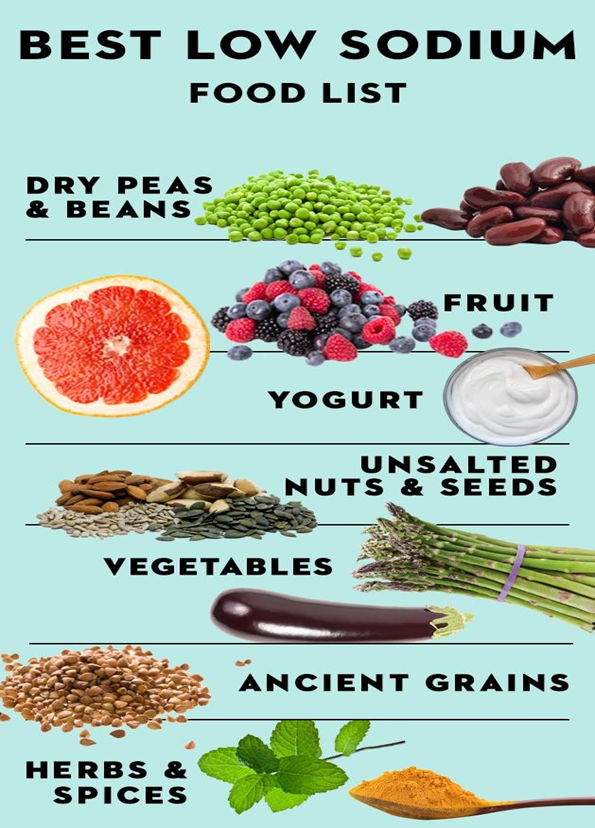A client is discharged from the intensive care unit following a myocardial infarction, and the healthcare provider prescribes a low-sodium diet. Which lunch selection indicates to the nurse that this client understands the dietary restrictions?
Macaroni and cheese.
Turkey salad sandwich.
Bacon, lettuce, and tomato sandwich.
Clam chowder.
The Correct Answer is B
A. Macaroni and cheese. Macaroni and cheese can be high in sodium, especially if it's prepared from a boxed mix or includes processed cheese. It is not typically recommended for a low- sodium diet.
B. Turkey salad sandwich. Turkey is a lean protein, and a salad sandwich can be made with low- sodium ingredients such as whole-grain bread, fresh vegetables, and low-sodium mayonnaise or mustard.

C. Bacon, lettuce, and tomato sandwich. Bacon is high in sodium and not suitable for a low- sodium diet. Other ingredients in the sandwich may also contribute to sodium intake, depending on their preparation.
D. Clam chowder. Clam chowder is often high in sodium due to the use of clam juice and added salt in the broth. It is not recommended for a low-sodium diet.
Nursing Test Bank
Naxlex Comprehensive Predictor Exams
Related Questions
Correct Answer is D
Explanation
A. Cherries and cranberries. These fruits are generally low in potassium and are safe for people with chronic kidney disease (CKD).
B. Apples and blueberries. These fruits are also low in potassium and safe for CKD patients.
C. Carrots and green beans. These vegetables are low in potassium and safe for CKD patients.
D. Avocados and bananas. Both avocados and bananas are high in potassium. Clients with stage 4 CKD need to limit their intake of high-potassium foods to prevent hyperkalemia, which can be dangerous given their impaired kidney function.
Correct Answer is C
Explanation
A. Scrambled eggs with roasted peppers and onions, lean ham, and toast. This meal contains lean protein from the eggs and ham, which is beneficial, but it lacks significant amounts of cancer- fighting nutrients found in fruits, vegetables, and whole grains.
B. Poached egg, bacon, biscuit, and canned peaches in light syrup. Bacon and canned peaches in syrup are not recommended for cancer prevention due to their high content of saturated fats and added sugars, respectively.
C. Oatmeal with raisins and nuts, with skim milk and 1/2 grapefruit. This meal contains whole grains from the oatmeal, antioxidants from the raisins and nuts, and vitamin C from the grapefruit, all of which have been associated with reducing the risk of certain cancers.
D. Pancakes with blueberries and maple syrup, and a turkey sausage patty. While blueberries are rich in antioxidants, the pancakes and maple syrup contribute refined carbohydrates and added sugars, which are not recommended for cancer prevention.
Whether you are a student looking to ace your exams or a practicing nurse seeking to enhance your expertise , our nursing education contents will empower you with the confidence and competence to make a difference in the lives of patients and become a respected leader in the healthcare field.
Visit Naxlex, invest in your future and unlock endless possibilities with our unparalleled nursing education contents today
Report Wrong Answer on the Current Question
Do you disagree with the answer? If yes, what is your expected answer? Explain.
Kindly be descriptive with the issue you are facing.
